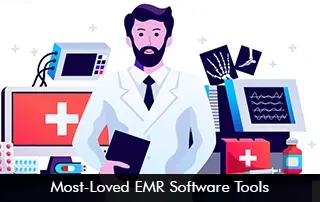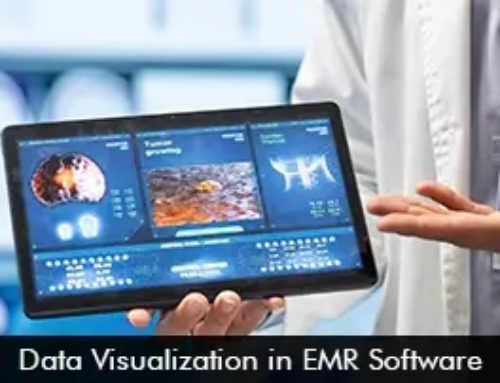Talking about EMR Software Systems, we can’t miss mentioning the star features in EHR Software. Users not only rate or rank vendors, but they also show a preference for certain software features and tools that empower them and help enhance healthcare delivery. Recent industry surveys and polls, such as KLAS and Black Book Research, highlight the winning functionalities in EMR Software. Some of which include usability, robust clinical tools, and smooth AI integrations.
Winning Features in EMR Software Systems
We have jotted down a list of the most favorite functionalities in Electronic Medical Records (EMR) Software from 2024 – 2025 surveys. This gives a crystal clear picture of what users and healthcare providers appreciate and why. It makes sense that EMR Software vendors include the tools mentioned below for prime user satisfaction.
Specialty-specific Workflows and Templates
Tailored templates for different specialties, such as urology, cardiology, dermatology, etc., are appreciated by clinicians. A one-size-fits-all EMR Software may not be the answer to fit different practice requirements. The recent 2025 Black Book reports highlighted vendors like ModMed EHR Software and Experity EMR System (urgent care) for their tailored solutions.
Streamlined Documentation and Clinical Templates
Intuitive and clear templates in the EMR System are a great way to ease documentation burdens. Tailored templates have been a strong reason for better provider experiences.
Clinical Decision Support Tools, reporting, and e-Rx
Users want in their modern EHR Software the features of e-Rx and reporting. E-prescribing is a great tool to streamline the prescribing process. Furthermore, the integration of drug interaction checks was appreciated by users for improved patient safety. Report generation was another must-have tool in the Electronic Health Records Software.
Telehealth and Mobile Access
It is no surprise that mobile access functionality is loved by users, as it gives them the flexibility to practice on the go. They are better informed and can even stay ahead of their schedules. With remote care in high demand, providers want telehealth integration in their EMR Software to expand care access beyond geographical barriers.
Artificial Intelligence
AI is no longer a buzzword, but has become a cornerstone to enhance patient care and empower physicians like never before. Surveys point out that users appreciate AI integration in their EHR Software to streamline charting tasks and highlight any care gaps or errors that need quick attention.
What did Users say was missing in the EMR Software?
These surveys also highlight the gaps in EMR Systems that can be improved over time. First and foremost, primary care physicians reported a lag in interoperability. They reported frustrations as data exchange was not seamless between systems.
KLAS reports that users have highlighted their concern with speed and reliability issues with the EHR Software. Slow response times and log-in issues remain a cause of concern for many users, hindering daily productivity.
Practices are looking for billing, scheduling, remote monitoring, and analytics that feel like they’re built right in — not added on as separate, costly third-party apps that just create more headaches. Reports from Black Book and other market analyses show that the demand for either all-in-one integrated EMR Software Systems or simple, affordable, and well-supported integrations is definitely on the rise.
The Right Fit EMR Software
These surveys and reports are a great yardstick to measure gaps in EHR Software, so these can be reduced and improved for better user needs and satisfaction. Providers want EMR Systems that meet their needs, have AI tools, and offer e-Rx and telemedicine capabilities for quality patient care. Over time, vendors can address the cracks in electronic medical records software to make them more robust and useful for clinicians.








